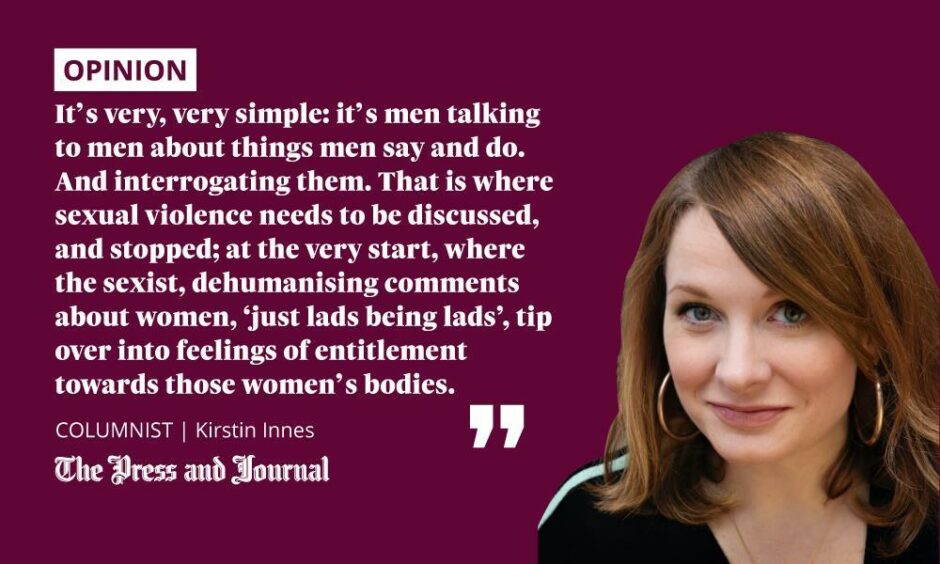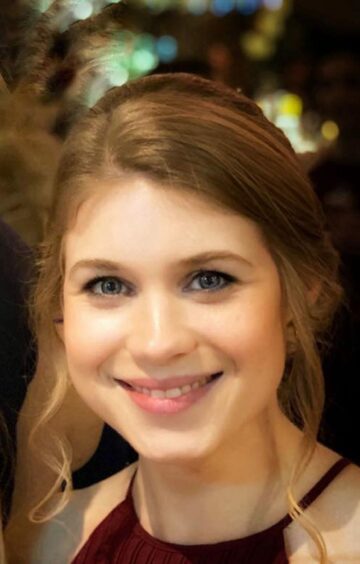I write this column fortnightly. Two weeks ago, when I was writing the last one, all news and comment media was dominated by one issue – male sexual violence against women, stirred up by the rape and murder of Sabina Nessa and the horrific details coming out of the courtroom where serving police officer Wayne Couzens was convicted of the rape and murder of Sarah Everard.
It didn’t feel as though there was anything else that was as important to write about that week, and yet I couldn’t. Like most women, who’ve spent their lives walking at night in heightened states of alert with keys between their fists, watching their drinks, bidding friends farewell by saying “text me when you get home” not “goodnight’, I was exhausted. Exhausted and desperate and completely crushed by the feeling that things were never, ever going to change.

When Sarah Everard’s body was found in March this year, I noticed a shift in the conversation. I watched my friends with daughters panic; like many other mothers of sons I felt compelled to post the statement on social media ‘I promise you I am raising sons your daughters will be safe with.’ I looked at my little boys, who were two and four at the time, and wondered how to start. How to start seeding in the conversation about consent, about when touch isn’t okay, how to explain sexism to a child who wants to be a unicorn fairy astronaut and a toddler whose imaginary friend is an apple.
It was mothers having conversation, not fathers
Again, again, again, it was the women who were having this conversation. The mothers, not the fathers.
When the Wayne Couzens coverage was everywhere, it was largely my female, not my male friends who were sharing it and commenting on it. I keep running a phrase by the Guardian columnist Marina Hyde through my head: “All women know we are prey.” We were all scared, all so tired, and the increasingly hamfisted PR statements issued by the Met Police as they frantically scrabbled for damage control just seemed to hit home that our work on this issue would never stop having to be done.
Women feeling threatened by a lone policeman needed to ‘flag down a bus driver’; Sarah Everard ‘should have known to resist arrest’. There was also that constant, omnipresent thrum, detectable even in Lord Justice Fulford’s statement that Sarah Everard was an ‘utterly blameless victim’, that sexual assault is something women tend to bring on themselves and have the power to prevent if they really try hard enough. I wondered again what a ‘guilty victim’ would look like? Maybe not quite so middle class, professional, white, sober, modestly dressed?
Then this morning I watched a short video, created by Forest of Black and Stand Agency with Police Scotland, trailing a new campaign called Don’t Be That Guy. It’s the first thing I’ve seen that seems to turn the conversation on its head. Millions of exhausted, angry women essentially screaming ‘f**k you, stop raping and killing us’ aren’t being heard; we can’t make this change, because this isn’t on us. This is a conversation that men need to have with each other.
Turning the conversation on its head
Full disclosure: the Don’t Be That Guy video was partly scripted by my partner, the writer Alan Bissett, working for The Stand. I knew that he had been working on something, while watching me feel impotence, grief and anger over the last two weeks; I didn’t until this morning realise it was this. It’s very, very simple: it’s men talking to men about things men say and do. And interrogating them. That is where sexual violence needs to be discussed, and stopped; at the very start, where the sexist, dehumanising comments about women, ‘just lads being lads’, tip over into feelings of entitlement towards those women’s bodies.
The reaction to the campaign online has been interesting; overwhelmingly positive, but again that positive response has been largely from women feeling relief and thanks that the conversation is even beginning. I appreciate the men responding positively; I note again that there are not as many of them. And the number of #notallmen trooping out of the woodwork, their hackles raised by the even suggestion that they themselves and the way they talk about women might be in need of an update, is depressingly predictable.
Yes, #allmen have the power to change this situation. It’s not women’s job, and we’re too tired to carry on. Over to you, fellas.
Kirstin Innes is the author of the novels Scabby Queen and Fishnet, and co-author of the forthcoming non-fiction book Brickwork: A Biography of the Arches

